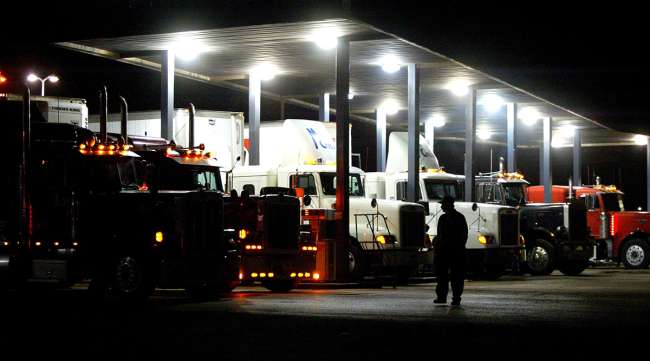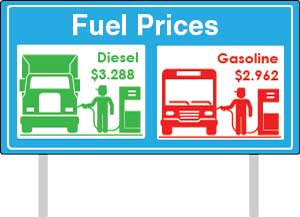Senior Reporter
Diesel Prices Gain 1.1¢ in 10th Straight Increase

The U.S. average retail price of diesel increased for the 10th week in a row, nudging up 1.1 cents to $3.288 a gallon, according to the U.S. Department of Energy’s Energy Information Administration report May 28.
Trucking’s main fuel costs nearly 72 cents per gallon more than it did a year ago.
The average price jumped in every region of the country except the Gulf Coast, where it slipped 1 cent to $3.54 a gallon.
California was the most expensive place to buy diesel at nearly $3.98 a gallon, an increase of more than 2 cents. Compared with a year ago, the cost of diesel in California is more than $1.06 a gallon higher. Along the West Coast, not including California, the price increased to $3.51 from $3.50. The Rocky Mountain region saw diesel increase by half of a penny to $3.353 from $3.348.
In the Midwest, diesel prices are up slightly more than a penny to $3.23 a gallon compared with last week. The price also went up in the East Coast region to $3.287 from $3.271, an increase of 1.6 cents.
Regular gasoline also increased nationwide by nearly 4 cents per gallon, to $2.96 from $2.92. EIA reported that prices jumped in all regions. The least expensive gas was in the Gulf Coast at $2.72 a gallon, up more than 4 cents from last week. The highest for unleaded regular was along the West Coast at $3.46, up 3 cents compared with May 21.
Even with these increases, some oil industry experts say now that the Memorial Day holiday has passed, the high demand for diesel and gasoline could begin to recede. However, that doesn’t mean there are no risks for higher prices.
“I think the worst may be over unless we get a hurricane threat; we don’t even need a hurricane strike,” Tom Kloza of the Oil Price Information Service told Transport Topics.
Kloza said he is cautiously optimistic because Russia and Saudi Arabia, two of the world’s top three oil producers, could decide to end their agreement to reduce oil drilling, putting additional crude on the market. Since January 2017, oil cartel members have been keeping 1.8 million barrels of crude a day off the market to reduce a worldwide glut, which depressed prices. The leadership of OPEC’s 14 member nations and Russia are set to meet on June 22 in Vienna. “I think that is going to determine what is going to happen,” Kloza said.

The increase in diesel fuel is less severe than in June 2008 when the U.S. Department of Energy said the national average reached $4.70 a gallon and in California it topped out at a record high of $4.96.
Rather than absorbing the higher prices, some carriers are passing along the added fuel costs.
“We just have a fuel surcharge in place to offset the rates,” said Greg Van Pelt, director of Special Operations for Mondovi, Wis.-based Marten Transport.“We base the surcharge on the weekly price of diesel. If the retail prices goes up, we adjust the surcharge.”
Marten Transport ranks No. 47 on the Transport Topics Top 100 list of the largest for-hire carriers in North America.
The price of West Texas Intermediate crude oil closed down on the Nymex for the fifth trading day in a row, ending May 29 at $66.73 a barrel. That is down 7.6% from last week, when it reached $72.24 — its highest level since November 2014.




